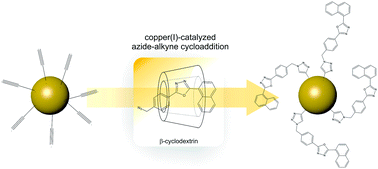Designing fluoroprobes through Förster resonance energy transfer: surface modification of nanoparticles through “click” chemistry
Abstract
Aqueous-phase 83 nm poly(propargyl acrylate) (PA)

* Corresponding authors
a
Center for Optical Materials Science and Engineering Technologies, School of Materials Science and Engineering, Clemson University, Clemson, SC, USA
E-mail:
foulger@clemson.edu
Aqueous-phase 83 nm poly(propargyl acrylate) (PA)

 Please wait while we load your content...
Something went wrong. Try again?
Please wait while we load your content...
Something went wrong. Try again?
P. Rungta, Y. P. Bandera, V. Tsyalkovsky and S. H. Foulger, Soft Matter, 2010, 6, 6083 DOI: 10.1039/C0SM00470G
To request permission to reproduce material from this article, please go to the Copyright Clearance Center request page.
If you are an author contributing to an RSC publication, you do not need to request permission provided correct acknowledgement is given.
If you are the author of this article, you do not need to request permission to reproduce figures and diagrams provided correct acknowledgement is given. If you want to reproduce the whole article in a third-party publication (excluding your thesis/dissertation for which permission is not required) please go to the Copyright Clearance Center request page.
Read more about how to correctly acknowledge RSC content.
 Fetching data from CrossRef.
Fetching data from CrossRef.
This may take some time to load.
Loading related content
